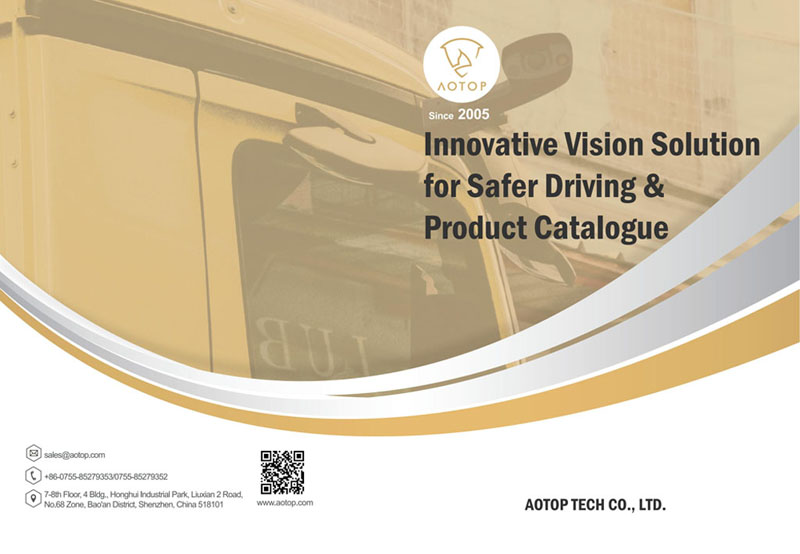Rear view cameras have become an important piece of safety equipment in modern vehicles, providing drivers with great convenience when reversing and parking. However, why are most cars not allowed to switch on their rear view cameras while driving? This paper will explore this question and introduce the application of large vehicle reversing camera systems in the industry and their importance.
Provisions of relevant laws and regulations in various countries


In major markets such as the United States, the European Union and China, there are clear regulations regarding the use of rear view cameras. For example, the NHTSA (National Highway Traffic Safety Administration) in the U.S. stipulates that all new cars must be equipped with a rear view camera from 2018 onwards, but it is not mandatory to turn it on during driving. The European Union mandated in 2018 that new cars need to be fitted with rear-view cameras to reduce accidents when reversing. China issued a similar regulation in 2018 requiring new cars to be fitted with rear-view cameras, with the main aim of improving safety when reversing and parking.
Initially rear view cameras were only recommended for installation as ancillary equipment, but as technology advanced and safety needs increased, countries began to mandate rear view cameras in new vehicles. The core objective of these regulations is to improve safety when reversing and parking, rather than using them during driving. Legislators believe that drivers need to concentrate on the road ahead and their surroundings during driving, and that the constant switching on of rear view cameras may distract drivers and increase the risk of accidents.
Key Safety Considerations

During driving, the driver needs to concentrate on steering wheel operation and pay attention to the road ahead and the surrounding environment. The continuous switching on of the rear view camera may cause the driver to check the screen frequently, which will distract his/her attention and increase the risk of accidents. Data shows that driver distraction is one of the main causes of traffic accidents. For this reason, many countries have laws that prohibit the use of rear view cameras during driving to ensure that the driver’s attention is focussed on the road ahead.
Application of reversing camera system for large vehicles
Large vehicles (such as trucks and semi-trailers/truck) have more blind spots due to their length and structure, and traditional mirrors are unable to cover the blind spots in the rear view. Therefore, the installation of a reversing camera system is particularly important for large vehicles. Especially when reversing/parking, reversing camera systems can significantly improve safety and operational efficiency, ensuring that drivers can reverse and park accurately and safely in complex environments.

AOTOP--Professional Car Camera Monitor Supplier
Designed for large vehicles, our car cameras and monitors feature high definition and high resolution to provide clear images in a variety of open condition environments. Our cameras use advanced image processing technology to provide a clear rear view, even in low light and adverse weather conditions. A high-resolution monitor ensures that drivers have a clear view of the camera’s transmission, helping them make accurate driving judgements. The rear view is only displayed when the reversing camera is triggered by putting the vehicle into reverse gear, ensuring that drivers have a clear rear view when reversing without distracting them during normal driving.

Conclusion
Overall, most vehicles are not allowed to switch on their rear view cameras while driving mainly to avoid driver distraction and to ensure driving safety. This rule is supported by global legislation and is based on in-depth research into traffic safety, emphasising the need for drivers to focus on the environment in front of and around the vehicle. Whilst rear view cameras can significantly improve safety when reversing, their use in motion can lead to drivers becoming overly reliant on the technology and losing sight of the actual road conditions. In addition, for larger vehicles, these camera systems solve the problem of blind spots in the field of vision, especially when performing complex manoeuvres such as reversing, increasing the safety and precision of the operation.
bibliography
- NHTSA (2018). “Rear Visibility Requirements”.
- European Commission (2018). “Regulation on Rear-View Cameras”.
- 中国国家标准化管理委员会 (2018). “机动车倒车影像系统技术规范”.
- Transport Research Laboratory (2020). “The Impact of Rear-View Cameras on Driver Safety”.
- AAA Foundation for Traffic Safety (2019). “Driver Distraction and Traffic Accidents”.
- European Transport Safety Council (2019). “Distraction and Inattention: Impact on Road Safety”.
- Bosch Automotive (2020). “Advanced Driver Assistance Systems (ADAS)”.
- Logistics Management (2021). “The Importance of Rear-View Cameras in Logistics”.
- Fleet Owner (2021). “Enhancing Fleet Safety with Rear-View Cameras”.
- MarketWatch (2023). “Global Market for Rear-View Cameras”.
- Transport Topics (2023). “Technological Advances in Rear-View Camera Systems”.

